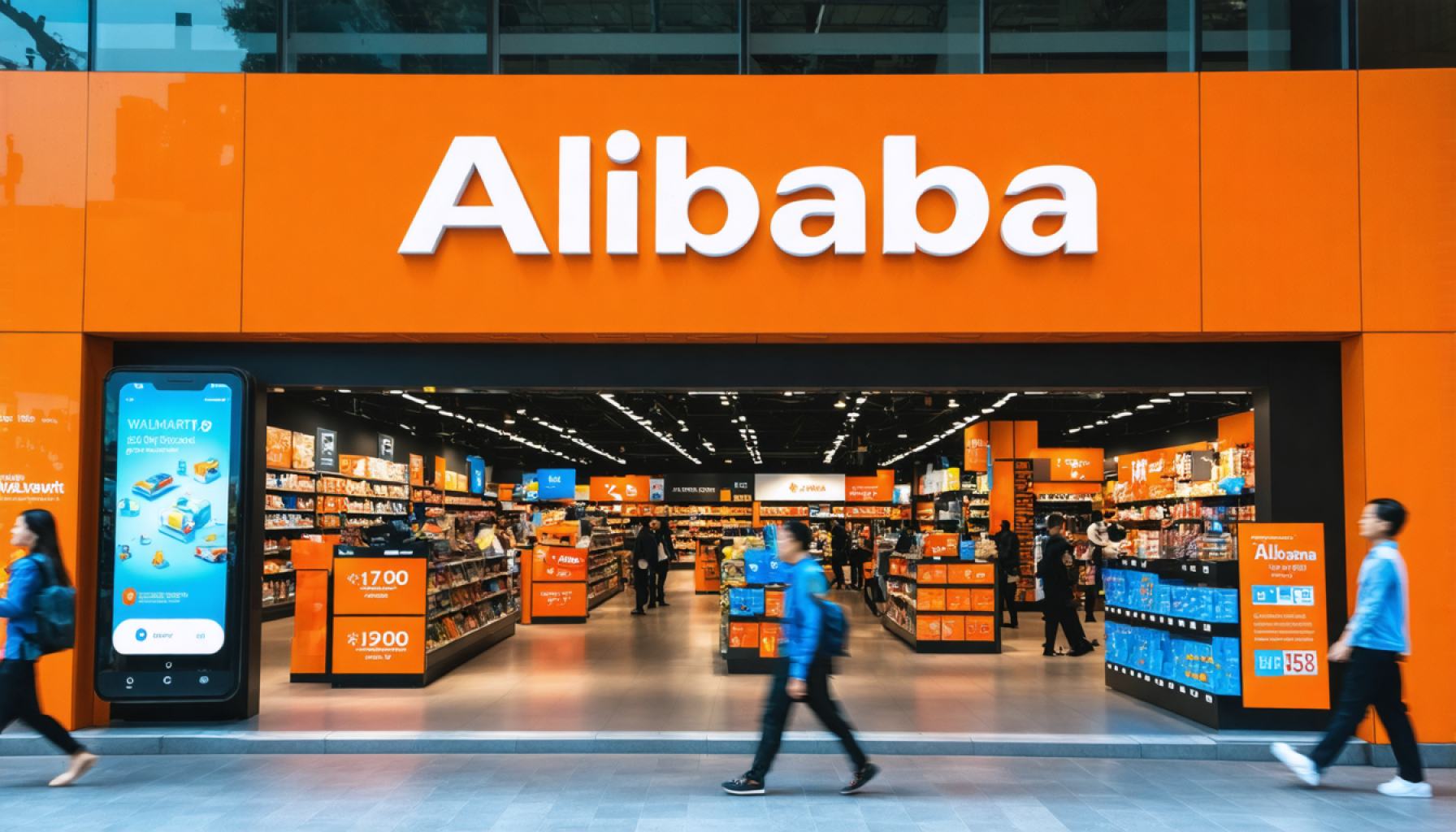- Asian markets displayed mixed performance, with Hong Kong’s Hang Seng index rising 2.7% driven by Alibaba’s strong financial results and AI ventures.
- Alibaba reported its fastest revenue growth in over a year, sending its shares up 8.1% in New York.
- Japan’s Nikkei 225 saw a slight increase, supported by a weak yen benefiting export sectors, while inflation pressures may influence future interest rates.
- On Wall Street, Walmart’s 6.5% drop overshadowed market gains despite better-than-expected profits, due to a bleak profit forecast amid inflation concerns.
- The outlook impacted the retail sector, affecting shares of other major companies like Costco and Amazon.
- US unemployment benefit claims rose, indicating potential labor market slowing, amidst fluctuating oil prices and geopolitical tensions.
- The interconnectedness of global markets highlights the delicate balance of economies reacting to unexpected developments, unveiling both opportunities and risks.
A dramatic shift traced across global markets as Asian shares painted a dynamic, albeit mixed, picture on Friday. Crackling with energy, the Hang Seng index in Hong Kong soared by 2.7%, ignited by Alibaba’s explosive financial results. Amid the electric buzz surrounding its AI ventures, the e-commerce titan posted its swiftest revenue growth in over a year, stirring optimism and sending shares up by 8.1% in New York.
Across the waters in Japan, a tepid rise for the Nikkei 225 reflected the watchful eyes of investors, attuned to currency fluctuations. Here, the yen’s weakness proffered a welcomed boost to export-heavy industries, while inflation figures lingered above the Bank of Japan’s targets, holding the potential to sway future interest rate decisions.
Meanwhile, on Wall Street, heavyweight Walmart’s stark 6.5% plunge cast a shadow over the market, erasing gains and leaving indices in the red. Although Walmart’s quarterly profits surpassed predictions, a gloomy profit outlook, exacerbated by inflation and tariff scares, rippled through the retail sector. Even as the retail giant forecasts revenue growth, the market recoiled, pulling down shares of peers like Costco and Amazon.
This eclectic tableau unfolded against a backdrop of economic indicators tugging at the Federal Reserve’s interest rate strategies, with a rise in unemployment benefit claims highlighting potential slowing in the labor market. As oil prices flickered and global politics stirred unease, the nuanced responses across regions painted a vivid portrait of an interconnected financial landscape, vibrant yet vulnerable. Such shifts underscore the delicate dance of economies in a world where unexpected announcements ignite ripples that reveal both opportunity and uncertainty.
Global Market Rumbles: What Investors Need to Know Now
How-To Steps & Life Hacks for Investing in Volatile Markets
1. Diversify Your Portfolio: Avoid concentrating investments in a single region or sector. Spread risk by investing in a variety of asset classes and geographies.
2. Stay Updated with Real-Time Data: Use financial news platforms and apps like Bloomberg and Reuters to stay informed of rapid market changes.
3. Set Stop-Loss Orders: Protect your investments from severe downturns by setting automated sell orders at predetermined price levels.
4. Focus on Quality Stocks: Invest in companies with strong fundamentals, such as Alibaba, which showcased resilience through its rapid revenue growth.
5. Understand Economic Indicators: Keep an eye on key economic metrics, such as inflation rates and currency fluctuations, especially in Japan and across Asia, to predict market movements.
Real-World Use Cases
– E-commerce and AI Ventures: Alibaba’s success is linked to its foray into AI. Investors should explore similar opportunities in tech.
– Export-Heavy Sectors: With the yen’s depreciation, investors could look at Japanese export-heavy industries for potential gains.
– Retail Resilience: Despite setbacks, Walmart’s predictive revenue growth indicates that some retail sectors may offer future opportunities.
Market Forecasts & Industry Trends
– Asian Markets: The dynamic performance of Asian markets like Hong Kong’s Hang Seng suggests continued volatility, driven by high-tech industries.
– Global Retail Sector: Expected to face near-term challenges due to inflation and trade policies. However, e-commerce remains a promising field.
Reviews & Comparisons
– Alibaba vs. Global Competitors: Compare Alibaba’s growth with peers such as Amazon. While both face headwinds, Alibaba’s innovation in AI is a differentiator.
Controversies & Limitations
– Trade Tensions: Ongoing US-China trade disputes could impact companies like Alibaba, affecting stock performance.
– Inflation Concerns: As inflation surpasses targets, central banks may need to adjust policies, influencing investment strategies.
Features, Specs & Pricing
– Alibaba: Known for innovative AI ventures. Recent revenue growth marks its fastest rate in over a year, appealing to the tech-savvy investor.
Security & Sustainability
– Market Volatility: Protect against cyber threats; ensure that investment platforms used are secure and compliant.
– Sustainability Focus: Consider companies prioritizing ESG (Environmental, Social, and Governance) factors as they become integral to future growth.
Insights & Predictions
– Federal Reserve’s Influence: How the Fed reacts to economic indicators like jobless claims will be pivotal in forming market directions.
Tutorials & Compatibility
– Using Investment Apps: Tutorials on platforms like Fidelity or Robinhood can enhance investing knowledge, especially for tracking real-time Asian market trends.
Pros & Cons Overview
Pros:
– Dynamic growth potential in Asian markets.
– Innovative tech-driven companies like Alibaba offer growth opportunities.
Cons:
– Economic uncertainty due to trade tensions.
– Inflationary pressures affecting spending power and investment returns.
Actionable Recommendations
1. Monitor Key Economic Indicators: Follow currency trends and inflation data to adjust investment strategies accordingly.
2. Utilize Financial Tools: Leverage online platforms to assess market trends and make informed investment decisions.
3. Stay Adaptive: Embrace market volatility as an opportunity to refine investment approaches.
For more insights on financial news, visit Bloomberg.









